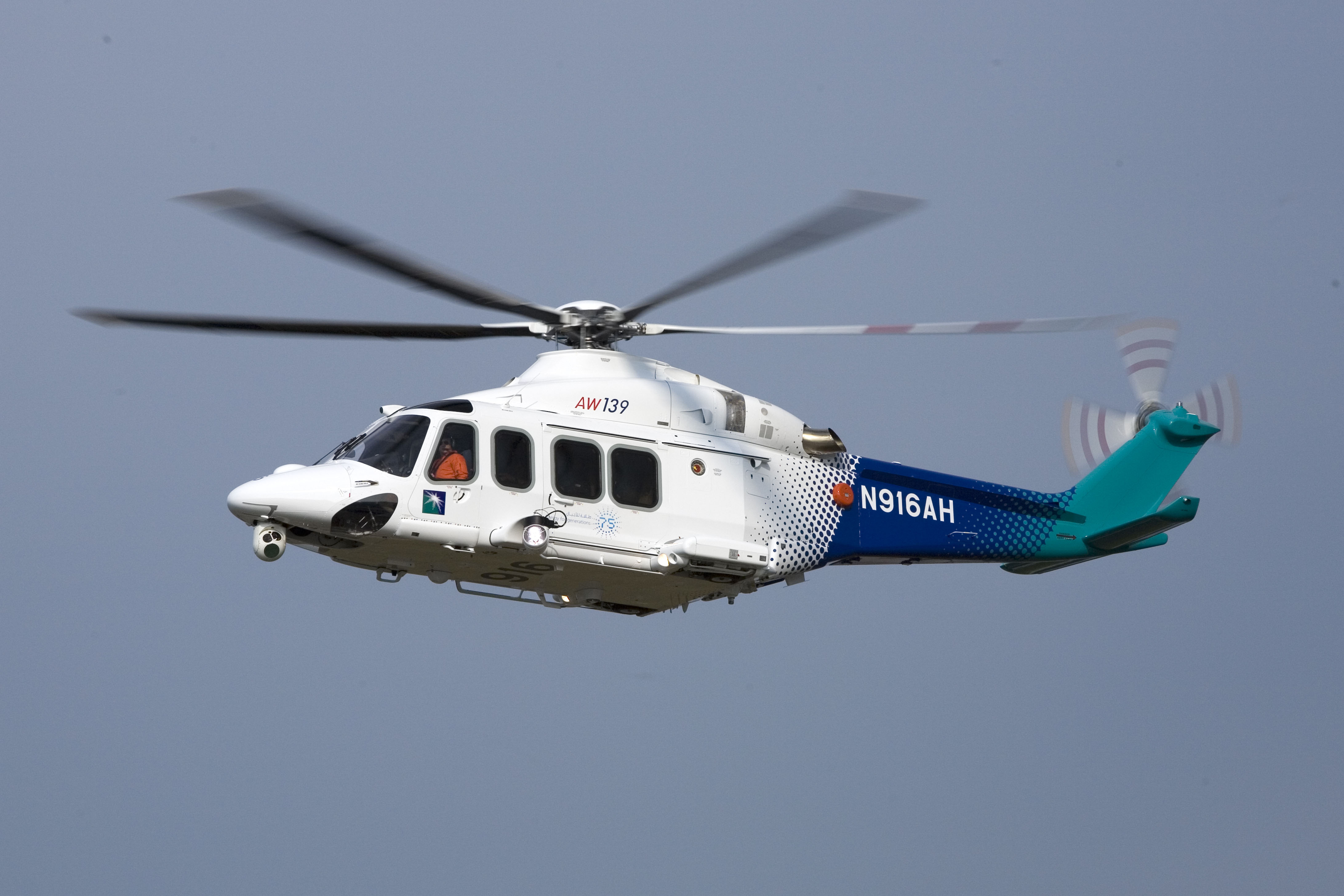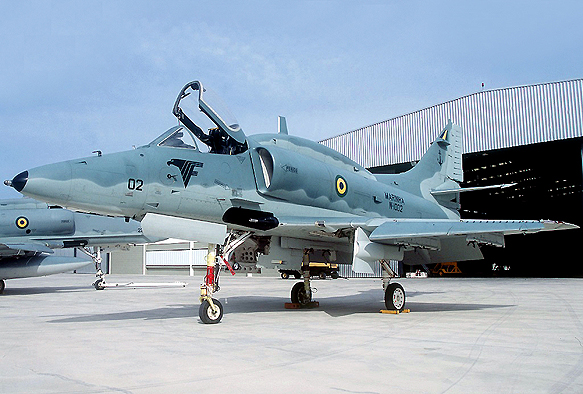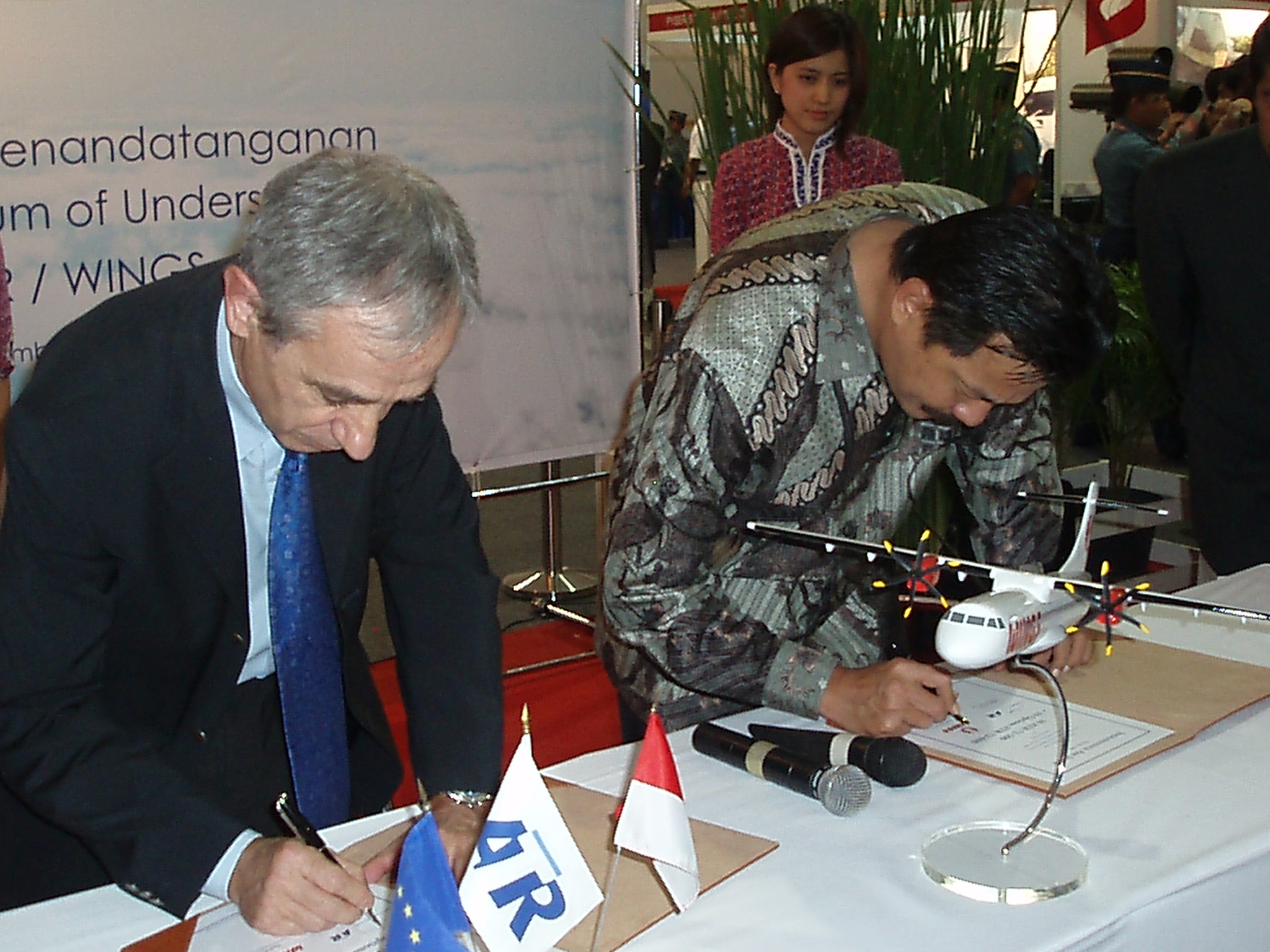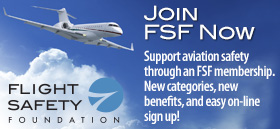Copa Airlines Takes Delivery of Embraer Aircraft
November 19, 2008
The acquisition of the Brazilian-made Embraer brings Copa’s fleet total to 42 aircraft, and maintains its position among the youngest fleets in the region, with an average age of 4.2 years. In addition to its 15 Embraer jets, Copa operates 27 Boeing 737 Next Generation aircraft.
“The new Embraer 190 aircraft combines advanced navigation technology with a seating configuration that provides greater comfort for our passengers,” said
The Embraer 190 is an important part of the airline’s growth plan, which includes acquisition of aircraft equipped with technology designed to reduce greenhouse gas emissions.
The Embraer 190 has seating capacity for 94 passengers, 10 in Business Class (Clase Ejecutiva) and 84 in the main cabin. The main cabin is configured with two seats on each side of the aisle without a middle seat.
CH-148 Cyclone Helicopter, Under Development by Sikorsky for the Canadian Forces, Completes First Flight Successfully
November 19, 2008
| � | � | |
| Photo shows Cyclone helicopter during successful first flight. (PRNewsFoto/Sikorsky Aircraft Corp.) WEST PALM BEACH, FL UNITED STATES |
The flight occurred
Sikorsky will build 28 CH-148 helicopters for the Canadian government. “The CH-148 helicopter will be a world leader in sophistication and capability for maritime helicopters,” said Program Manager
The CH-148 helicopter represents the next step in Sikorsky’s long planned extension of the S-92(R) helicopter into the H-92(TM) helicopter product line. It is equipped with a fully digital, fly-by-wire system designed to improve significantly the aircraft’s maneuverability, safety and effectiveness. The CH-148 helicopter further builds upon Sikorsky’s rugged S-92 helicopter, which meets the most demanding safety standards in
Among the most sophisticated rotary wing aircraft in the world, the production CH-148 helicopter will be an extremely versatile, multi-mission aircraft with capabilities including anti-submarine warfare, anti-surface warfare, search and rescue, and troop and cargo transport. It will be fully equipped for ship-based operations including automatic blade and tail fold systems and a deck to aircraft recovery assist system. Capitalizing on proven S-92 helicopter capabilities that include a glass cockpit with advanced avionics, systems allowing flight into known icing conditions, flaw tolerant components and state-of-the-art search and rescue equipment, the CH-148 helicopter will incorporate additional mission systems including Forward- Looking Infrared Radar (FLIR), 360 degree search radar, passive and active acoustics systems, threat surveillance and countermeasure capabilities, and network link communications.
“The stringent qualification and certification standards of the S-92 helicopter will be further extended through the Canadian military certification process resulting in an aircraft that will meet the most exacting civil and military standards in the world,” said Hunter. “Its proven and expanded design focused on reliability, maintainability and safety will provide operational capabilities at world-class life cycle support cost levels.”
Sikorsky Aircraft Corp., based in
United Technologies Corp., based in
NASA Planea Ensayo de ‘Nariz Electrónica’ en la Estación Espacial Internacional
November 19, 2008
9/11/2008 /PR Newswire Latinoamerica/ — Los astronautas de la NASA en la misión STS-16 del trasborador espacial Endeavour instalarán un instrumento en la Estación Espacial Internacional que puede “oler” la presencia de elementos químicos peligrosos en el aire. La “ENose” o nariz electrónica, aún experimental, ha sido diseñada para contribuir a proteger la salud y la seguridad de los miembros de la tripulación monitoreando el ambiente de la estación espacial para detectar productos químicos dañinos tales como amoníaco, mercurio, metanol y formaldehído.
ENose viene a llenar la brecha de antigua data entre las alarmas de a bordo y los instrumentos analíticos complejos. Tanto en la Estación Espacial internacional como en el trasbordador espacial y en la Estación Espacial Rusa Mir ya se habían observado problemas de calidad del aire. En la mayoría de los casos, sin embargo, los químicos sólo fueron detectados después que la tripulación había estado expuesta a ellos, o nunca. El dispositivo ENose, que estará en funcionamiento en forma continua y autónoma, es el primer instrumento en la estación que detectará y cuantificará las pérdidas o derrames de productos químicos en el momento que se produzcan.
American Airlines Hace Funcionar Todo Para que los Viajeros Puedan Dedicarse a los Negocios
November 19, 2008
18/11/2008 /PR Newswire Latinoamerica/ — American Airlines sabe lo que significa el término “viaje de negocios”. Los empresarios y hombres de negocios que suben a un avión no lo hacen sólo para disfrutar del paisaje, sino para cerrar acuerdos. Es por ello que American brinda servicios y programas para ayudar a los viajeros de negocios a aprovechar al máximo su tiempo de vuelo y mantener su productividad, aun cuando están lejos de la oficina.
La Experiencia de la Sala de Espera
Las salas de espera Admirals Club(R) de American, en 44 destinos en todo el mundo, ofrecen un tranquilo oasis y un entorno de negocios de calidad, donde los viajeros pueden trabajar, beber o comer algo antes o después de un vuelo, o entre uno y otro. Las comodidades, que varían según la ubicación, incluyen centros de negocio multifuncionales con estaciones de trabajo, computadoras personales Lenovo con acceso gratuito a Internet de alta velocidad, puertos de datos para PC, teléfonos, impresoras, fotocopiadoras y servicios de fax. Por lo general, siempre hay varios tomacorrientes disponibles para que los viajeros puedan seguir trabajando y recargar sus dispositivos electrónicos.
DASSAULT AVIATION : Dassault Aviation enters exclusive discussions with Alcatel-Lucent to acquire its stake in Thales
November 19, 2008
PARIS–(Marketwire – November 18, 2008) – Following Dassault Aviation’s press release on October 13, 2008 and Alcatel-Lucent’s one on October 14, 2008, both companies today announced that they are entering exclusive discussions until December 15, 2008 to acquire Alcatel-Lucent’s 20.8% stake in Thales by Dassault. The acquisition price will be 38 euros per share.
Dassault Aviation’s work’s council and board of directors will be called for a meeting.
Dassault Aviation will file with the AMF (French Financial Market Authority) a request for exemption to launch a mandatory tender offer.
Besides, Dassault Aviation has launched discussions with the French state to define the scope of their partnership as shareholders of Thales.
Dassault Aviation and Alcatel-Lucent will keep the market informed about any significant change in their negotiations.
About Dassault Aviation
Dassault Aviation is a major world player in the aeronautical industry, involved in the civilian and military fields. The company’s leadership status is driven by expertise in emerging and strategic technologies, trend- setting design capabilities, lean and flexible production facilities, a highly skilled and committed workforce, and a broad portfolio of civilian and military products.
World leader for the top-of-the-range business jets and only manufacturer of business jets in Europe with the Falcon family, Dassault Aviation also produces the Rafale combat aircraft. The French authorities appointed Dassault Aviation as prime contractor of nEUROn, an European UCAV demonstrator programme.
Thanks to its unique experience as an architect of complex airborne systems and digital flight control systems, the Company brings innovative cooperation schemes to the European military aviation sector.
Hawker Beechcraft Awarded $171 Million Contract for 23 King Air 350ER Turboprops
November 19, 2008
Hawker Beechcraft Awarded $171 Million Contract for 23 King Air 350ER Turboprops
WICHITA, Kan. (Nov. 19, 2008) – Hawker Beechcraft Corporation (HBC) has been awarded a contract by the United States Air Force (USAF) with an estimated value of $171 million. The contract is for 23 extended-range (ER) special mission Beechcraft King Air 350ER turboprops. Deliveries will take place in 2009.
“We are honored to be part of the team supplying this critical capability to our military and to continue our long term relationship with the U.S. Department of Defense,” said Jim Schuster, HBC chairman and CEO. “The King Air 350ER is ideally suited for use in special missions as an airborne Intelligence, Surveillance and Reconnaissance (ISR) platform. We understand the priority of this important mission and are committed to the aircraft deliveries necessary for rapid deployment.”
The versatile King Air 350ER is part of the Beechcraft King Air family, the world’s best selling turboprop line of all time. The King Air 350ER is a derivative of the King Air 350, and provides extended range through the addition of nacelle fuel tanks, along with an increase in gross weight from 15,000 to 16,500 pounds and the incorporation of heavy-weight landing gear. The King Air 350ER will be modified for the USAF with military required equipment and provide the Air Force with advanced technology and reliability.
The King Air 350ER can provide over eight hours of endurance and has the flexibility to loiter low and slow or cruise at 300 knots and 35,000 feet. Taking off at gross weight with full fuel and full payload, the King Air 350ER can fly out 100 nautical miles, perform a low altitude surveillance mission for seven hours and 20 minutes, fly back 100 nautical miles, and still land with over 45 minutes of fuel on board. No other aircraft in its class can come close to this performance.
Hawker Beechcraft Corporation is a world-leading manufacturer of business, special-mission and trainer aircraft – designing, marketing and supporting aviation products and services for businesses, governments and individuals worldwide. The company’s headquarters and major facilities are located in Wichita, Kan., with operations in Salina, Kan.; Little Rock, Ark.; Chester, England, U.K.; and Chihuahua, Mexico. The company leads the industry with the largest number of factory-owned service centers and a global network of more than 100 factory-owned and authorized service centers. For more information, visit www.hawkerbeechcraft.com.
AW139 Enters Service With Saudi Aramco
November 19, 2008
AgustaWestland, a Finmeccanica company, is pleased to announce that the AW139 medium twin helicopter has now entered service with Saudi Aramco. Saudi Aramco’s fleet of AW139 helicopters is being used to support oil and gas operations in Saudi Arabia and operate alongside a fleet of seven AW109 Power helicopters that were delivered in 2006.
To mark the event a ceremony was held at Ras Tanura, Saudi Aramco’s main helicopter base in Saudi Arabia, in the presence of the Italian Ambassador, His Excellency Eugenio d’Auria and representatives from Saudi Aramco and AgustaWestland.
“I am delighted to celebrate this important milestone and the successful collaboration between Saudi Aramco and AgustaWestland” said Renzo Lunardi, Senior Vice President Commercial Business, AgustaWestland. “The successful introduction into service of the AW109 Powers and now the AW139s is an achievement we are all very proud of.”
The AW139 is the market leader in its weight class with over 430 aircraft sales and nearly 200 aircraft deliveries since 2004. The AW139 has set new standards in the offshore oil and gas support market due to its new technology, high performance, enhanced safety and attractive operating costs.

ATR AND LION AIR SIGN MoU FOR 20 ATRs
November 19, 2008
ATR and Indonesia’s carrier LION AIR today inked an MoU (Memorandum of Understanding) for 10 firm ATR 72-500 with options for 10 additional aircraft. The deal, announced on the occasion of the Indodefence Air show in Jakarta, is valued at more than US $ 380 million, including options, and was inked in the presence of His Excellency Bapak Yusuf Kalla, Vice-president of the Republic of Indonesia, and Juwono Sudarsono, Minister of Defense. These aircraft will be the first new ATR 72-500s to fly the Indonesia’s skies.
These 72-seat aircraft will be operated by LION AIR’s subsidiary WINGS AIR, and will be equipped with the “Elegance” cabin, higher power rated PW 127M engines and the latest technological innovations in navigation aid and communications tools. Aircraft deliveries will start in 2009. LION AIR is the leader in domestic traffic in Indonesia.
Commenting on the signature, Rusdi Kirana, LION AIR CEO, said: “These aircraft are for our subsidiary WINGS AIR and the reason we want these aircraft is for our feeder service to support our Boeing 737-900ER operations. With our brand new fleet of ATR 72-500s, we will be able to develop a strong low-cost network, feeding LION AIR’s major hubs.” He concluded: “LION AIR has chosen ATR because they have a big support network, which was a very important issue for us. This is coming from the presence of their Support Center in Singapore, the strong presence of ATR aircraft in the South East Asia, and the well-known and recognized support provided by the manufacturer to its regional operators.”
Stéphane Mayer, ATR CEO, stated: “We are pleased to ink this agreement with LION AIR and to include such a prestigious carrier as a new ATR operator in Asia. With its brand new fleet of ATR 72-500s, LION AIR will operate the most fuel-efficient and environmentally-friendly regional aircraft, while providing its passengers with the most advanced comfort.” He added: “Today’s deal with LION AIR is also very important for us in order to increase our presence in the expanding Indonesian market and continue the growth of our large fleet in South East Asia, which has become a real booming market in the last three years.”
Including the 10 firm orders of today’s MoU, ATR has sold, since the beginning of the programme, 968 aircraft (419 ATR 42s and 549 ATR 72s), and has delivered 799 (401 ATR 42s and 398 ATR 72s), thus posting a current backlog of 169 aircraft.
The ATR –500 series:
With its ATR 42-500 and ATR 72-500, ATR supplies state-of-the-art aircraft with the highest standards of comfort. The advanced six-blade propeller provides remarkably low noise levels. All ATR models are compliant with noise regulations and have a large margin with regard to Chapter IV (ICAO) noise regulations, effective 1st January 2006. The ‘-500 series’ feature the lowest fuel consumption per passenger and CO2 emissions of the regional aviation, thus contributing to make ATR the “Green Player” of the regional aviation.
About LION AIR:
Launched in 2000 with a single aircraft, LION AIR has emerged as Indonesia’s leading airline. Today, the airline operates 37 planes flying to not only all of Indonesia’s major cities and wondrous tourist destinations, but to Singapore, Penang, Kuala Lumpur and Ho Chi Minh as well. Since 2005, LION AIR has the biggest market share in Indonesia, while plans to expand in position both in the domestic market and throughout the Asia-Pacific region.
About ATR
Toulouse, Southern France-based regional aircraft manufacturer ATR is the world leader in the 50 to 74-seat turboprop market. ATR is an equal partnership between Alenia Aeronautica (a Finmeccanica company) and EADS.
La Marinha Brasileira moderniza sus AF-1 Skyhawk
November 19, 2008
Por: Juan Manuel Barragán
Río de Janeiero, 19/11/2008 – A fines de Noviembre la Marinha Brasileira y Embraer firmaran una carta de intención para la restauración y modernización de doce de sus 24 McDonnell Douglas A-4 AF-1/AF-1A Skyhawk (ex A-4KU).
La Directoria General del Material da Marinha (DGMM) y Embraer están coordinando como se llevará a cabo la modernización, que podría ser basado en el programa del Northrop F-5EM Tiger II de la Força Aérea Brasileira.
Embraer tiene algunas dudas sobre la viabilidad de usar la electrónica y radar del F-5EM para el programa AF-1M, debido a que son dos modelos completamente distintos y el Skyhawk tiene menos espacio interior para ubicar los nuevos equipos. De seguirse adelante con el proyecto, se necesitarán equipos específicos para los AF-1.
El presidente de Embraer, Frederico Fleury Curado y el Director General de Material Naval Almirante de Esquadra Marcus Vinicius Oliveira dos Santos debatieron los detalles de este programa recientemente en Río de Janeiro. Se estima que el costo por unidad rondara los USD 5 millones. Paralelamente IAI (Israel Aircrafts Industries) se encargara de la revisión de los motores Pratt & Whitney JP-52.
Una vez llevada a cabo la modernización, los AF-1 podrán lanzar bombas guiadas por láser y misiles del tipo AM-39 Exocet o Gabriel III.
Estos aviones operaran a bordo del portaaviones NAe “São Paulo” (A-12) – (ex “Foch” de la Armada Francesa) y desde la Base Naval de São Pedro de Aldeia.
Por otra parte, la Marinha Brasileira planea reabrir el programa para dotar al portaaviones NAe “São Paulo” con tres aviones de patrullaje marítimo y tres aviones de transporte embarcado. La aeronave que es candidato es el S-2T Turbo Tracker. Este avión la Marinha Brasileira lo conoce muy bien y ha quedado muy satisfecha con su desempeño, durante el último Ejercicio Aeronaval Combinado ARAEX VI, realizado en las aguas del Atlántico Sur entre el 2 y el 5 de Mayo del 2002. En dicho ejercicio operaron desde la cubierta del NAe São Paulo tres aviones S-2T Turbo Tracker del Comando de Aviación Naval de la Armada Argentina entre otras aeronaves.
Embraer manejara ambos programas y reequipara los aviones con nueva avionica, RWR y ECM. Los Tracker de transporte también serán equipados con tanques para reabastecimiento en vuelo removibles.
De esta forma se pone de manifiesto la firme convicción de la Marinha Brasileira de dotar a su buque insignia de modernas aeronaves, capaces de extender el brazo armado de la flota.

AF-1 Skyhawk en la Base Naval de São Pedro de Aldeia (Marinha Brasileira)
TAM October 2008 traffic; domestic RPKs up 7.3%, international RPKs up 35.2%
November 17, 2008
As reported by ANAC (National Civil Aviation Agency), TAM registered a 7.3% increase in domestic RPKs compared to October 2007 and an increase of 15.8% in domestic ASKs. TAM registered a domestic market share of 51.8%, a 5.4 p.p. increase compared to October 2007. In the international market, TAM registered a 35.2% increase in RPKs and a 26.3% increase in ASKs compared to October 2007. TAM registered an international market share of 83.8%, which represents a 12.6 p.p. growth over October 2007. Domestic load factor in October was 64.7%, higher than the market average of 61.6%. International load factor was 77.8%, higher than the market average of 72.9%.








